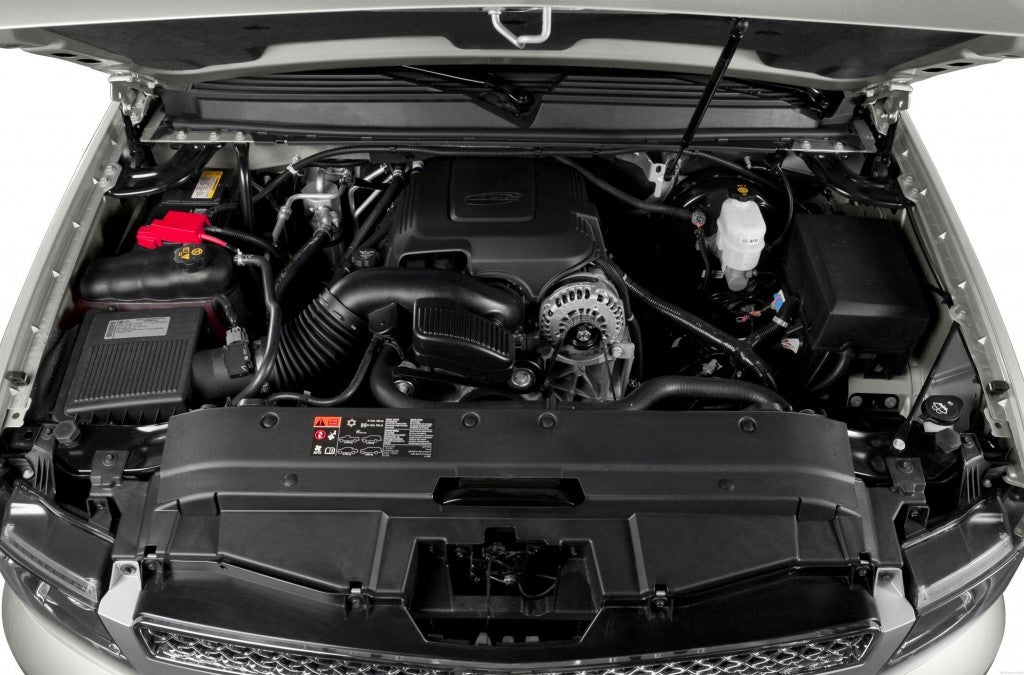 "LJ909" (lj909)
"LJ909" (lj909)
04/24/2019 at 14:18 • Filed to: gmt-900, SUV, Hybrid, Chevy Tahoe, GMC Yukon, Cadillac Escalade
 1
1
 1
1
 "LJ909" (lj909)
"LJ909" (lj909)
04/24/2019 at 14:18 • Filed to: gmt-900, SUV, Hybrid, Chevy Tahoe, GMC Yukon, Cadillac Escalade |  1 1
|  1 1 |

The GMT900 triplets, Escalade, Tahoe and Yukon, got hybrid variants introduced for the 2007 model year. P owered by GM’s 6.0 V8 along with 2 60 kw electric motors, t otal combined output was nearly 400 horses. The engines were paired to an ancient but complex 4 speed auto.

The hybrid system was a joint developed by GM,BMW, Chrysler and Diamler. They were impressive in that they could, under certain conditions, they could run on full on EV mode at low speeds. It also had a complicated 3 mode transmission. Per !!!error: Indecipherable SUB-paragraph formatting!!! , who tested the Tahoe variant back in March of ‘08: The first mode is continuously variable (CV) and provides ratios from infinity to 1.70. The Tahoe always starts in this mode because it lets the transmission take off smoothly from a stop without the need for a torque converter. When accelerating gently, you can stay in this mode using only the electric motor up to 32 mph, but usually, the 6.0-liter V-8 cuts in to provide additional power.
The second mode also uses CV operation but with a different planetary gearset to provide ratios from 1.70 to a deep overdrive of 0.50 (used during coasting and regenerative braking). This mode provides the benefits of a CVT at higher speeds while keeping the electric motors running in their most efficient rpm range.
Finally, the transmission has four fixed ratios, which are selected when the electric motors are needed to charge the batteries or when towing heavy loads. The powertrain management system, which GM calls the “hybrid optimizing system,” juggles the mode and the ratio to provide the most efficient operation at each driving load.
Pretty impressive at the time, but now that these things are over 10 years old, they could prove pricey to repair. Being full size SUVs they are of course naturally heavy. The Tahoe Hyrbid was 160 lbs shy of 3 tons. All that hybrid tech added another 350 lbs to the vehicle weight (at least to the Tahoe variant.) To offset that, GM added lighter weight items such as seats and wheels,aluminum hood rear hatch etc.

They also had special areo pieces that aided in improving fuel economy
as well. The main difference, and
one of the main differences
that you could use to tell it apart from standard Tahoe’s, was a unique front fascia
that had front air damn and reworked grill to improve airflow. Apparently the drag coefficient
on the Tahoe was 0
.34

Inside it was standard Tahoe/Escalade/Yukon with the main differences being hybrid gauges and a Hybrid display on the center screen that allowed you to see the power flow.
So where they all that efficient ? Sure, for what they were. A standard Yukon got an abysmal 14 city/ 20 highway . The Hybrid? 21 city/22 highway, an improvement yes, but today, a F150 can get better economy. As tested mileage from what i could find looks like about 19. Not that impressive.

Did I mention how both the Escalade and Tahoe got big ass Hybrid decals along the side to remind people that they were hybrids in case they forgot?
And the price for all this? They came loaded with standard awd. The Tahoe was $53,295; Yukon was about $53k, and the Escalade sat at the top of the price hill starting at $73,475. All the models lasted until about 2013 when the next (and current) gen full size suvs came on the scene. They were canceled due to GM using next gen Ecotec engines in the SUV’s that were supposedly more efficient . They could use the hybrid models now though. Something as large as these things with a hybrid or plug in power train could work well now.
 BrooklynEagle
> LJ909
BrooklynEagle
> LJ909
04/30/2019 at 17:48 |
|
Worth noting that the official numbers, at least, represent a 50 percent increase in city mpg, 10 percent
bump highway. That ain’t a small thing
. Lots of people have
argued the advantage of hybrid tech (or improved fuel economy generally) is greater in bigger, less efficient vehicles.